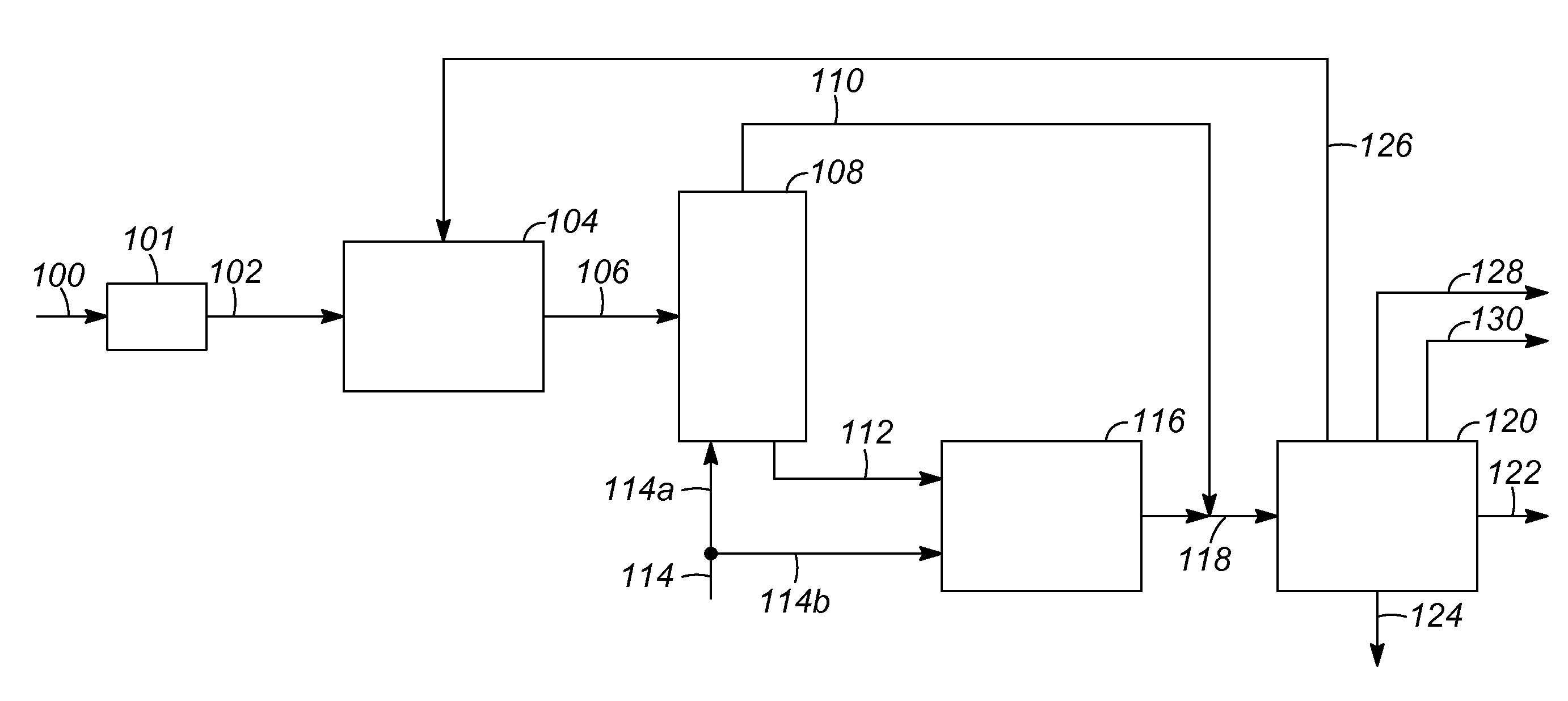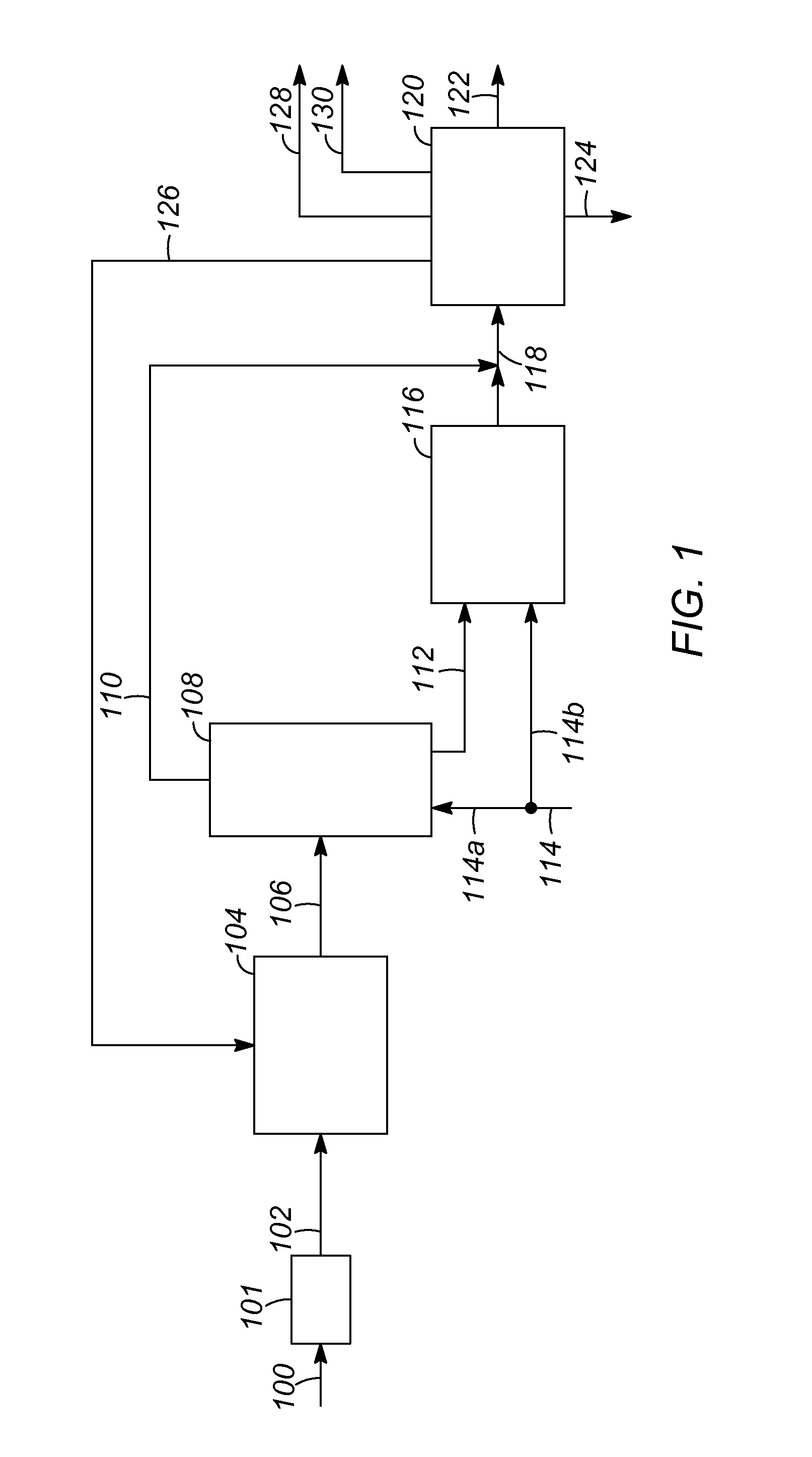Production of Diesel Fuel from Crude Tall Oil
a technology of crude tall oil and diesel fuel, which is applied in the direction of biofuels, fuels, hydrocarbon oil treatment products, etc., can solve the problems of difficult to see or recogniz
- Summary
- Abstract
- Description
- Claims
- Application Information
AI Technical Summary
Benefits of technology
Problems solved by technology
Method used
Image
Examples
example 1
Deoxygenation of Crude Tall Oil with Non-Heated and Non-Mixed Feed
[0037]The crude tall oil was thoroughly mixed, sampled, and then mixed with hexadecane in a 1:4 ratio to mimic a recycle operation around the deoxygenation reactor. The feed mixture was not further mixed or heated and was fed through the reactor inlet line by means of a piston pump where it was mixed with gaseous hydrogen. The hydrogen-crude tall oil-hexadecane mixture was then fed over the hydrogenation and deoxygenation catalyst in a downflow fixed bed reactor. The fixed bed reactor was maintained at 320° C., 500 psig, a H2 / feed ratio of 2500 scf / bbl, and a LHSV of 1 h−1 based on the crude tall oil portion of the feed only.
[0038]The initial appearance of the product was clear and colorless as expected for a deoxygenated hydrocarbon product. However, with each subsequent sample collected every 24 hours the product appearance became darker and increasingly opaque indicating incomplete deoxygenation and probable cataly...
example 2
Impact of Heating and Mixing on Feed Homogeneity
[0039]The crude tall oil feed was thoroughly mixed at room temperature and transferred to a Pyrex beaker. The room temperature appearance of the mixed crude tall oil feed showed an inhomogeneous mixture with small droplets of a dark brown phase dispersed in a black phase. After allowing to settle for 1 hour the feed separated with a brown phase appearing at the bottom with a much larger black phase above. This biphasic feed was heated on a hot plate to 50° C. with mixing. At 50° C. with mixing the mixture was homogeneous with no brown phase at the bottom or dispersed as droplets throughout. The temperature was increased to 60° C. with mixing and the crude tall oil remained homogeneous.
[0040]After the feed was cooled to room temperature and mixing was stopped, the crude tall oil again separated into two phases with the brown heavier phase at the bottom. The feed was again heated to 50° C. but this time without mixing. After holding the ...
example 3
Tall Oil Feed being Heated and Mixed
[0041]The crude tall oil thoroughly mixed, sampled, and then mixed with hexadecane in a 1:4 ratio to mimic a recycle operation around the deoxygenation reactor. The feed was mixed and heated at 70° C. before transferring to a piston pump that was heat traced to maintain a temperature of 70° C. in the pump. The hot feed was fed through the reactor inlet line by means of a piston pump where it was mixed with gaseous hydrogen The hydrogen-crude tall oil-hexadecane mixture was then fed over the hydrogenation and deoxygenation catalyst in a downflow fixed bed reactor. The fixed bed reactor temperature was varied throughout the run. The pressure was 1000 psig and the H2 / feed ratio was 4000 scf / bbl. The LHSV, based on the crude tall oil portion of the feed only, was also varied throughout the run. The table below shows the varied reaction conditions and the production oxygen level. The hexadecane / CTO feed had an initial oxygen content of 1.8 wt % as meas...
PUM
 Login to View More
Login to View More Abstract
Description
Claims
Application Information
 Login to View More
Login to View More - R&D
- Intellectual Property
- Life Sciences
- Materials
- Tech Scout
- Unparalleled Data Quality
- Higher Quality Content
- 60% Fewer Hallucinations
Browse by: Latest US Patents, China's latest patents, Technical Efficacy Thesaurus, Application Domain, Technology Topic, Popular Technical Reports.
© 2025 PatSnap. All rights reserved.Legal|Privacy policy|Modern Slavery Act Transparency Statement|Sitemap|About US| Contact US: help@patsnap.com



